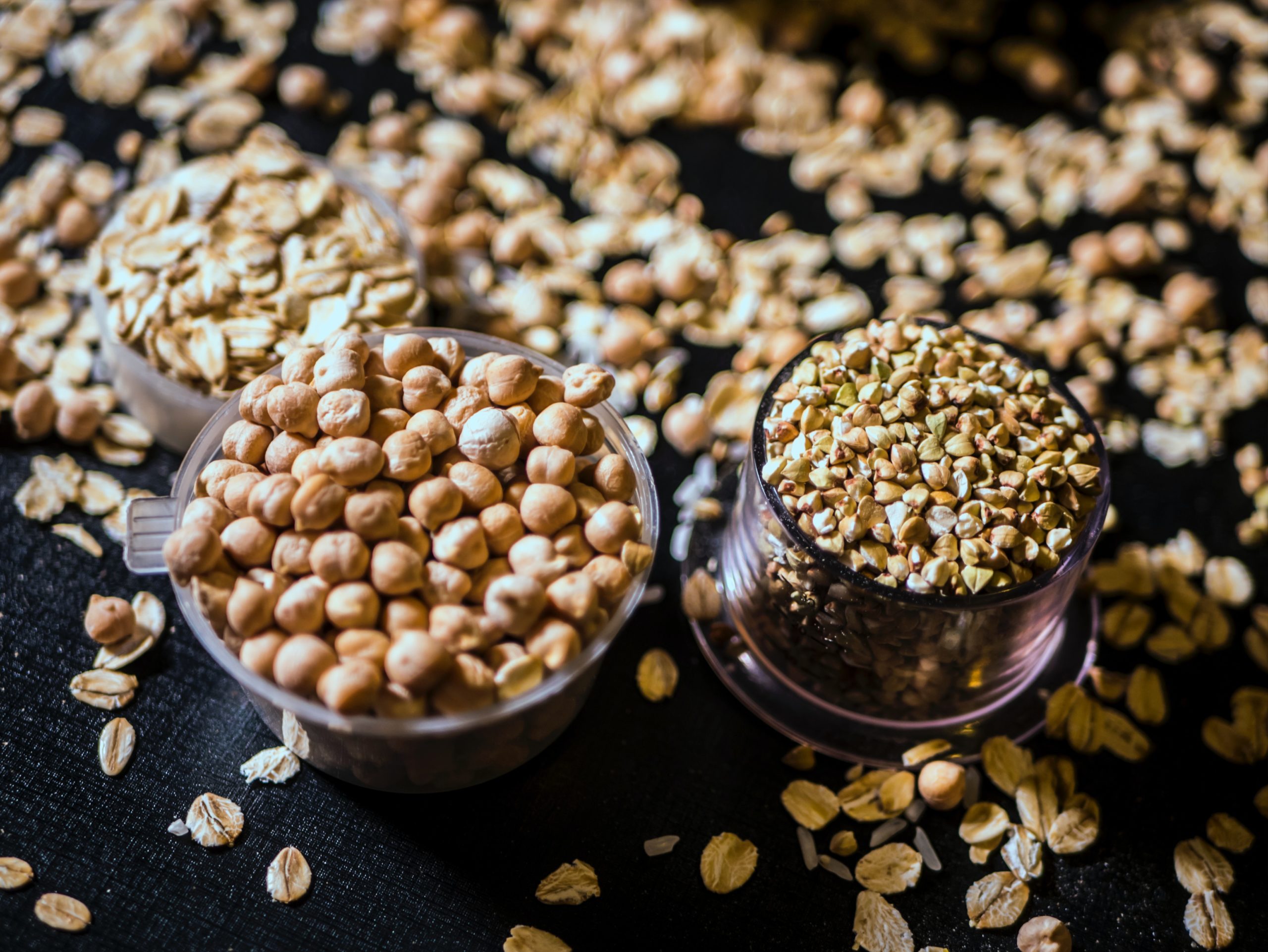Whole grain oats: an entirely sustainable cereal

Oats and its declinations in the diet
The common oat, scientifically known as Avena Sativa, is a plant in the Gramineae family that has been utilized for human and animal nourishment since ancient times. Oats are used to manufacture oat flakes, which are popular in Anglo-Saxon cooking and are made by subjecting oat grains to a thermal process. Oat grains are steamed, then crushed with special rollers, and then lightly toasted to give them the characteristic flakes appearance. Breakfast is the most common use for them. Oats are also used to manufacture flour, which is used in baking and cookies, as well as oat milk.
Oat milk is getting more and more successful on the world market[1] and is the most sustainable type of vegetable milk on the market. Approximately[2], in fact, if 200 ml of cow’s milk causes 0.6 kg of CO2 emissions, the use of 1.5 square meters of soil and 120 liters of water, 200 ml of oat milk causes only 0.15 kg of CO2 emissions, the use of 0.2 square meters of soil and about 7.5 liters of water. This performance is also better than other types of vegetable milk such as almond milk (which uses about 70 liters of water per 200 ml), rice milk (which uses about 50 liters of water per 200 ml) and soy milk which uses slightly less water but is responsible for a slightly higher amount of CO2. The cultivation of oats, however, is not at the basis of supply chain problems and consequent deforestation as that of soybeans.
Whole grain oats: why to include it in the diet
Oats can be available in both whole grain and hulled grain form. Unlike other cereals, whole oats contain 17 grams of protein per 100 grams of product, as well as 7 grams of fat, 4 grams of fiber, and 66 grams of carbohydrates. Calcium, magnesium, potassium, silicon, and iron are among the mineral salts found in it[3].
Oats and Mediterranean Diet
Although oats is a typical cereal of central-northern Europe, since many years it has become part of the Mediterranean Diet, which has always been rich in whole grains. Cereals, in addition to daily fruit and vegetable consumption, in fact, play an important role in the Mediterranean Diet Pyramid. Whole grains are favored because they have a low glycemic index and include complex carbs, which are necessary for the body’s energy production.
Oats and the circular economy: sustainability in the round
Oat straw has the potential to be a critical component of an environmentally friendly value chain. Straw is created from the stalks of cereals left over after the grains have been collected, which are known as culms. Soft wheat, durum wheat, barley, and oats are the most common ingredients. Rice, millet, rye, and spelt are further examples. In chilly climates, growing with straw is extremely beneficial. As a result of being nourished and insulated, the soil is less susceptible to pest assault, and the fruits appear to be more plump. It will also be easier to maintain because no hoeing or spading will be required.
It’s also sound-absorbing, breathable, and remarkably fire-resistant, which is why it’s used in green construction. In reality, it’s an excellent insulator with anti-seismic qualities. It is used to construct roofing in Northern Europe and tropical nations. Until well before the 16th century, it was mixed with dirt to build bricks. The bales will be blended with a plaster made of natural lime, clay (derived from dug soil), or sand, and the framework will be made of wood. Straw must be acquired from local farmers, ideally in the afternoon when the moisture content is lowest. It’s hypoallergenic and less expensive than cement. Furthermore, it is frequently used in the composting process to enhance the carbon-to-nitrogen ratio, and it has lately begun to be explored as an alternative energy source for the same reason. A high level of effectiveness has been reported, particularly when coupled with mushroom farm compost that has been depleted.
Author: Antonio Caso, food and territorial marketing expert
[1] https://bristolcityst.org.uk/oatmeal-market-to-witness-impressive-growth-revenue-to-surge-to-usd-162-9-billion-by-2028-exclusive-report-by-esticast-research/
[2] Poore & Nemecek (2018), Science. Additional calculations, J. Poore
